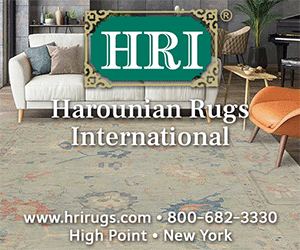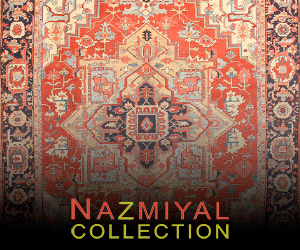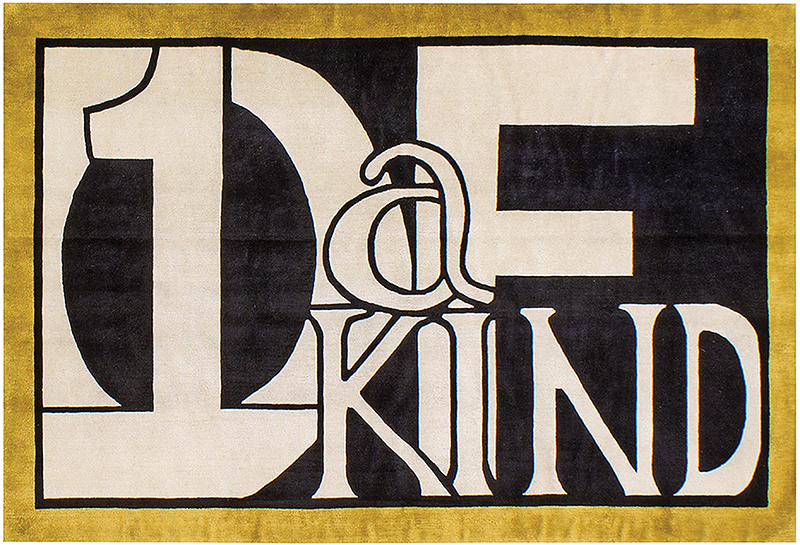Treading softly between the ‘80s and the ‘20s
The hand-knotted rug and carpet trade is no stranger to the phrase “One of a Kind,” nor is it an industry short on personalities aptly described by the term. A new house collection debuting at Oscar Isberian Rugs in Chicago, Illinois, merges discrete and distinct personalities and a design aesthetic spanning literal decades; Rug Insider has the first look at this era-spanning one-of-a-kind collection.
Deciding where this story genuinely begins is a bit of a challenge. Does it start with the early career of Chicago-based artist Robert E. Paige or does it start with his noteworthy afrocentric Dakkabar collection of textiles carried by Sears from 1973-75? Does it begin with hand-painted silk fabrics created in 1986 that would eventually inspire the new house collection of carpets at Oscar Isberian, or does it start with his chance meeting of Pipa Bradbury in 2018 at the Art Institute of Chicago?
“What the rugs did was add new texture and depth to the existing work.“ Robert E. Paige
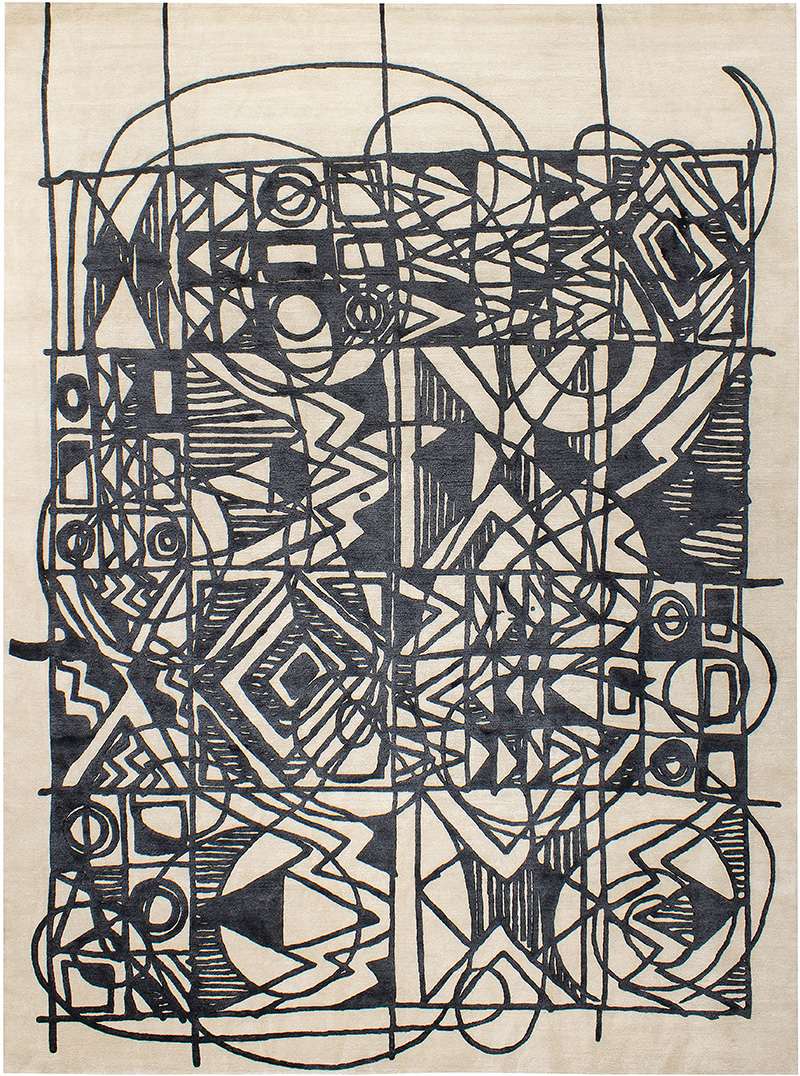
Lyrical Abstraction
One could even further postulate it started when the duo engaged with Brooks Ralston of Oscar Isberian. Perhaps it is best to leave the start less rigidly defined in favor of the artist’s own thoughts: “God made nature to illustrate beauty.” And so it is the story and collection begins with natural materials such as wool and silk crafted into beautiful carpets. “Art for the floor,” as described by Bradbury, who continues “Many interior designers utilize a generally neutral palette with a colorful rug on the floor as the art.”
“Any work of art can be the starting point of a room,” interjects Paige. So, of course, why not start with an artful rug?
“It was really nice to take Robert’s fabrics and adapt the work, through collaging, into new media,” states Bradbury. “We have these pieces of art [the hand-painted silks] and then took them and interpreted and altered them into something larger and more extra.” The connection between the artwork and the emergent carpet collection, now christened “Tread Softly,” was readily apparent to Ralston. “The designs were perfect from the get go, but capturing the fluidity of the watercolor on silk was the true difficulty.”
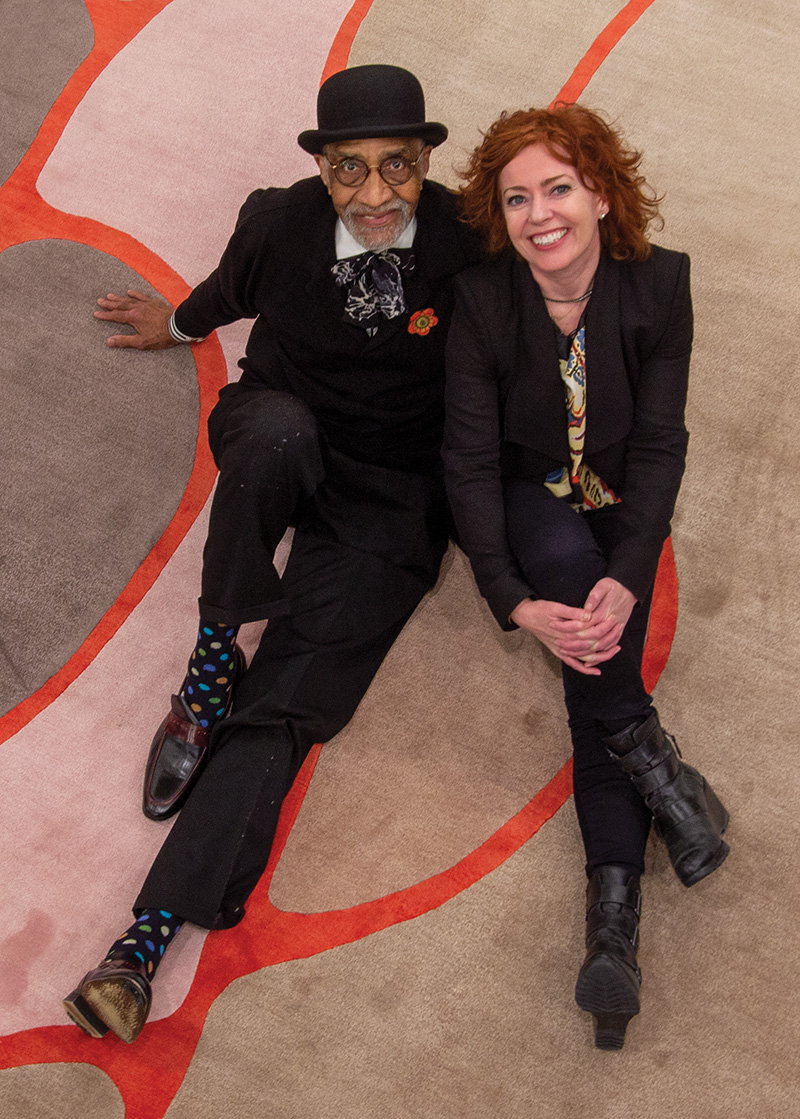
Robert E. Paige and Pipa Bradbury are the creative duo who brought Paige’s artwork to the attention of Oscar Isberian Rugs. They are shown here in one of the Chicagoland showrooms of the firm posing on “Puddles” from the forthcoming “Tread Softly” collection.
The new collection is a collaboration between artist Paige, visionary Bradbury, and technician of sorts in the form of the savoir faire of Oscar Isberian, and their maker in Kathmandu, Nepal. “All of the basic principles of design—shape, scale, volume—were already present in the silks,” begins Paige. “What the rugs did was add new texture and depth to the existing work.” The carpets are made using a Tibetan knotted wool and silk pile further accentuated by mixed pile heights giving both visual and tactile relief to the finished carpets. At the same time, the relationship between original work and newfound carpet—particularly in regard to palette—remains obvious.
“I’ve been doing this a long time using 'Kool Aid’ colors,” says Paige. And so in translating the inherent vibe if you will of of the works, Oscar Isberian honors the originator while pushing the work to new textural heights. “If you just put a design onto the flat surface of a rug, you lose the opportunity to express yourself through the characteristics of the medium,” observes Bradbury. This willful embrace of carpetry, not just rudimentary application of design to surface, creates an opulence, if you will, the trio views as important, especially for a “luxurious and decadent” textile product that will be close to the skin.
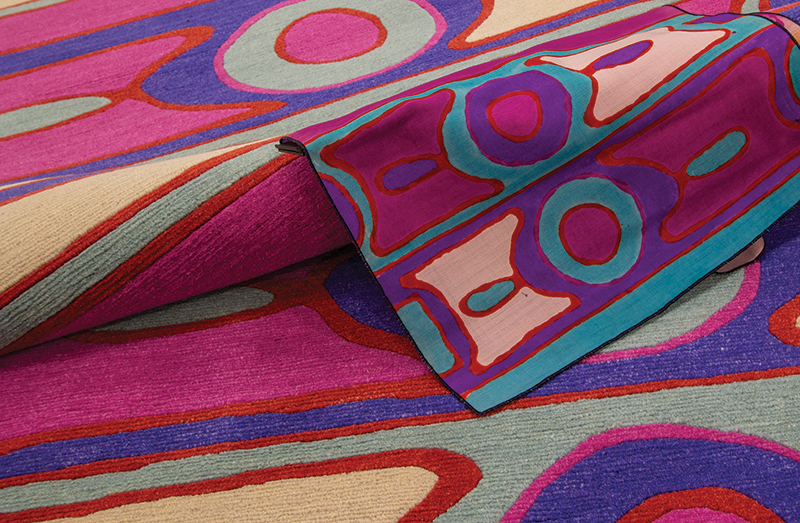
The carpet “Traveler” is shown above with the original hand-painted silk from which the design was translated.
“Everyone is a textile user,” says Paige. “Whether it is a Berber [Moroccan] carpet or a William Morris patterned fabric, the successful ones relate to nature.” Bradbury elaborates, "In these carpets you see the colors of sunset and tropical fish and the iridescence of both."
“In furniture design,” Bradbury continues, “there is a great deal of attention paid to positive and negative space,” which when applied to rugs and carpets—as any scholar, enthusiast, aficionado, or collector of rugs knows—only furthers the aesthetic merits of a particular genre of the individual piece.
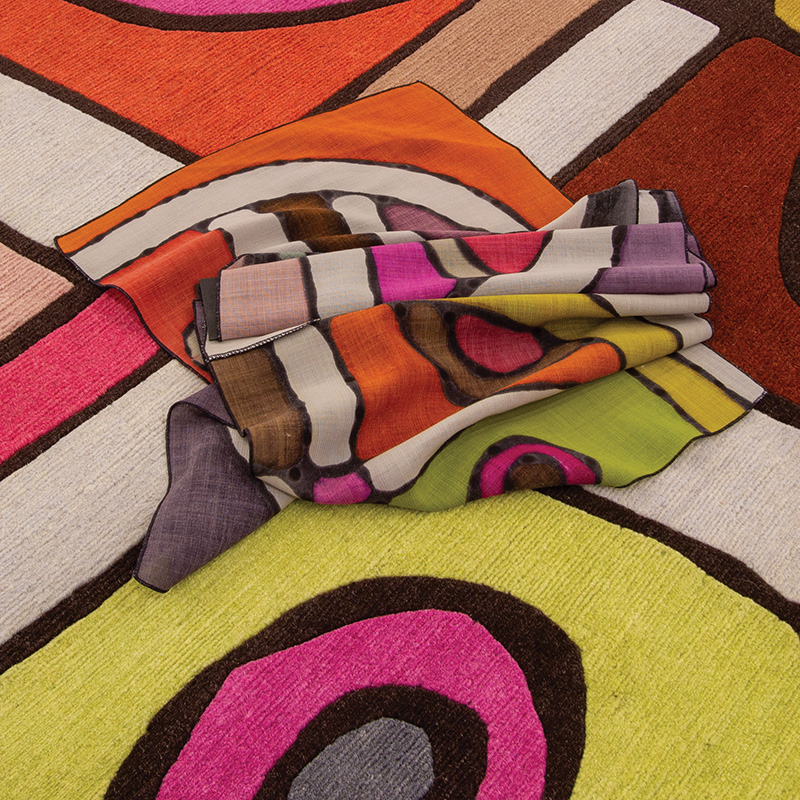
The runner “Color Harmony” is shown with the original hand-painted silk from which the design was translated.
Brooks, Bradbury, and Paige all repeatedly stress the textural juxtaposition—again both visual and tactile— between the smooth and sumptuous original hand-painted silks and the lush Tibetan wool and Chinese silk carpets—almost as if it were a mantra of sorts that defines the collection as distinct. At the same time there is this familiar juxtaposition of new and old, vintage and newfound, all set within the cyclical nature of trends and aesthetics, which—for reasons varied and myriad—allow us to treat as novel and modern forms which are simply unfamiliar; often originating disparately. “This business [the rug and carpet trade] can become very trend heavy and repetitive with the search for a new voice coming at an ever faster pace,” states Ralston. “To create a collection coming from such a different place and time, the point of view of these original hand-painted silks, is truly exciting.”
The new “Tread Softly” collection will make its public debut later this Spring at Oscar Isberian in Chicago.
Photographs for Rug Insider courtesy of Oscar Isberian Rugs


